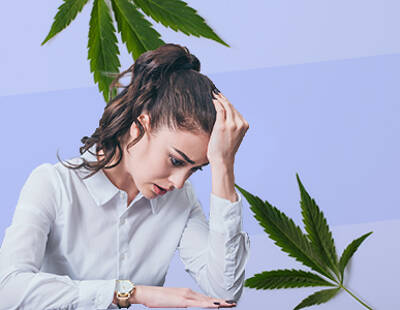
"Off-label" is when a drug, medication, and other health care product is used for an indication that has not been approved for use by the Food and Drug Administration (FDA). It is possible to use off-label drugs in a way that is beneficial for the patient. But, it can also be harmful to the patient to use off-label drugs. It is important that patients and their physicians discuss any off-label drug usage.
Commonly, medications are prescribed off-label.
Tricyclic antidepressants, a group of antidepressants, is one common example. Although these drugs are approved to treat clinical depression, doctors have found that they can also be used to treat other types, like fibromyalgia or migraines.
Another common off-label drug use is a low-dose regimen of aspirin for people with diabetes and heart disease. Although they may not offer the same level of safety or effectiveness as traditional dosages of aspirin these off-label uses can be more affordable and are safer.
It is legal and often appropriate to prescribe drugs for off-label uses unless they violate ethical guidelines or safety regulations. Most states allow physicians in the state to prescribe off-label drugs as long as they remain within their scope of practice.

Doctors, nurses practitioners and physician assistants are able to prescribe off-label drugs. It could be used to supplement existing treatment plans and to offer an alternative to a drug that isn't available in the patient’s region or for a certain population.
The most commonly off-label drug for children is psychiatric medication. Academic Pediatrics published a study in 2009 that showed 62% of outpatient visits resulted with an off-label prescription.
The American Academy of Family Physicians and American College of Obstetricians and Gynecologists have developed treatment guidelines. These guidelines recommend the standard way to treat certain conditions and diseases. These guidelines usually contain information on off-label drug use, as well as the benefits and risks of different treatments.
The primary source of off-label drug uses information is medical literature. This contains reports from clinical trials that were not approved by FDA. These clinical trials can be helpful in helping a physician decide which off-label drug use to prescribe.
A doctor may also obtain information on off-label drug uses from the manufacturer of the drug. Although companies are not allowed by law to promote or distribute information on off-label uses to the general population, they may share this information with health professionals upon request.

It is becoming more common for pharmaceuticals to be promoted off-label. Recent cases have reignited debates regarding the FDA's authority in regulating off-label marketing and advertising.
Off-label marketing requires that the manufacturer provide sufficient evidence and truthfulness to show that the drug is appropriate for the patient. Additionally, the drug must be safe in its intended use.
Health care providers who use off-label drugs can also be at risk of being sued if the drug causes an unintended or adverse outcome for a patient. Fenfluramine Hydrochloride and Phentermine Hydrochloride (also known under the name Fen-Phen) were both off-label drugs that caused severe and potentially fatal heart valve damage in some patients. Those cases led to the FDA ordering the two drugs off the market.
FAQ
How do prices for CBD differ across states?
Prices for CBD products are dependent on where you live. In fact, prices can differ by more than ten times!
In general, prices increase the further north you go. CBD is expensive in Alaska on average at $35 per gram. It costs in Hawaii around $200 pergram.
This trend is continuing across the country. Prices range from $5 up to over $2,500 for a gram.
Why is this happening?
Price variations are due to the different levels of regulation. Some states require CBD products to contain minimal THC (the psychoactive element of marijuana). Some states don't care how much THC is present.
Some companies will sell their products in one place and ship to another.
What are the most common mistakes companies make when they try to enter the US market for cannabinoid products?
The first mistake is not understanding what the regulations are for cannabis products. This could result in you needing to alter your product formulation.
A second error is not properly labeling your product. It is important to determine if your product contains CBD or THC.
The third is how to package your product correctly. If your product does contain THC, then you must ensure that it is packaged in child-resistant containers.
If your product does not contain THC, then you should still follow all packaging laws because there are many states where cannabidiol (CBD) is legal.
It is important to track recalls of your products. It is crucial to notify customers as soon possible if you have a problem with your product.
Is CBD a viable option?
The answer is yes. The answer is no, not because of its medicinal benefits, but because it helps people feel better without getting high.
People who want an alternative to prescription medications will love the fact that you don't feel any different after you use it.
And as we know from studies, there is a lot of evidence showing that cannabis helps with pain relief, anxiety, depression, insomnia, and many other conditions.
Cannabinoids, also found in cannabis are thought to interact with our brain receptors. This interaction produces feelings of relaxation and well-being.
Cannabidiol (CBD), oil can be used for health purposes. It's therefore important to fully understand its functions and effects.
What are the most popular CBD brands?
These top CBD brands have been hand-picked by us based on their quality, reliability, value, and other criteria.
They offer high-quality CBD oil products that contain less than 0.2% THC.
We recommend you also check out our top CBD sellers worldwide.
How big is global CBD market size?
The global CBD market was valued at $US 3.5 billion in 2015, according to Euromonitor International. This is more than 10% higher than 2014
The report forecasts this figure to reach $US 6.4 billion by 2020, representing an average annual growth rate of 12%.
CBD products will make up around half of all products derived from hemp by 2020.
This includes CBD oils and other CBD products like food, beverages, cosmetics and pet care items.
Which states consume the most CBD?
California, Colorado, Oregon, and Washington are the three top states. These states have high populations, high incomes, low unemployment, and large populations. These states also have higher hemp farms than the rest.
California leads the pack because its economy heavily depends on agriculture. California produces a lot of the country's fruits, vegetables. This makes sense since cannabis is derived from the same plant as hemp.
Colorado and Oregon follow close behind because they both produce marijuana for medical purposes. These two states, however, do not permit the recreational use of marijuana, as California does.
Other states that rank high include Washington, New York. Florida, Illinois. Pennsylvania. Mississippi.
Statistics
- OralWhere HED is the human equivalent dose, and Km is a correction factor estimated by dividing the average body mass (BM) of the species (60, 0.020, and 0.150 kg for 11 humans, mice, and rats, respectively) and by its surface area (see: Nair et al. (ncbi.nlm.nih.gov)
- As a substance that was federally illegal before the passage of the 2018 Farm Bill, hemp-derived cannabinoids with no more than 0.3% THC still face a regulatory grey area. (forbes.com)
- The use of these products is likely to become even more widespread if the World Health Organization's recommendation that CBD no longer is scheduled in the international drug control conventions is adopted by the United Nations member states [201]. (ncbi.nlm.nih.gov)
- A recent systematic review of human trials also reported that individuals with epilepsy receiving CBD (5–20 mg·kg−1·day−1) were more likely to experience decreased appetite than those receiving placebo (i.e., ~20 vs. 5% of patients) (ncbi.nlm.nih.gov)
- however, one study also found that these effects were virtually abolished when the original media (a nutrient broth agar) was replaced with one containing 5% blood (increasing the minimum concentration to ~160 μM CBD) [179]. (ncbi.nlm.nih.gov)
External Links
How To
What are the most common problems in the CBD industry?
The market for CBD products is expanding at an astounding rate. However, this market is still full of challenges for businesses that want to expand. There are many challenges facing businesses looking to enter this space, including low consumer awareness, high costs of entry and limited access to capital.
Many consumers do not know what CBD is or how it works. This means that they cannot make informed decisions about whether or not to buy CBD products.
Many CBD companies depend heavily on word of mouth marketing. This is expensive as they must pay advertising costs and to hire staff to market their brand.
High production costs are another problem facing new entrants in the CBD industry. It is very expensive to obtain the raw materials required for CBD products. CBD oil is made from hemp that has been grown in particular climates.
To grow enough hemp for CBD oil production, it costs approximately $1,000 per acre. Many small farmers can't afford to begin.
Access to capital is another challenge for new entrants in the CBD market. Many people who want to start a business are discouraged by banks due to the stigma associated with the industry.
There is also regulatory uncertainty around the sale of CBD products. There are no guidelines for how CBD products should market.
Some states have passed legislation restricting the sale of CBD products, but this has yet to become national policy.
So far, only two states - Maine and Nevada - have legalized recreational marijuana.
However, some states like Massachusetts and Michigan are considering similar measures.
These changes could result in increased competition between CBD manufacturer.
These factors lead to many entrepreneurs choosing to work from their home instead of starting a physical company.